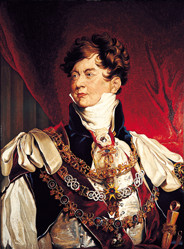Wig (hair)
|
|
| This article is part of the hats and headgear series: |
| Overview of headgear |
| Hats; Bonnets; Caps |
| Hoods; Helmets; Wigs |
| Masks; Veils; Scarves |
| Tiaras; Papal tiaras |
| Crowns; Types of crowns |
| List of hats and headgear |
A wig or toupee is a head of hair - human, horse-hair or synthetic - worn on the head for fashion or various other aesthetic and stylistic reasons, including cultural and religious observance. Some people wear wigs to disguise the fact that they are bald. Actors, on the other hand often wear wigs so they better resemble the character they are portraying.
Wigs in History
William_Hogarth_004.jpg
In most Commonwealth nations, special wigs are also worn by barristers, judges, and certain parliamentary officials as a symbol of the office. Until 1823 all bishops in the United Kingdom wore ceremonial wigs as well. The wigs worn by barristers are in the style favoured in the late eighteenth century. Judges' wigs are, in everyday use as court dress, short like barristers' wigs (although in a slightly different style) but for ceremonial occasions judges and also senior barristers (QCs) wear full bottomed wigs. In the eighteenth century such wigs were made from real hair and powdered in order to give them their distinctive white or off-white colour. Powdering wigs was messy and inconvenient and the development of the naturally white or off white powderless wig (made of horsehair) is no doubt what has made the retention of wigs in everyday court dress a practical possibility.
As she aged, Queen Elizabeth I wore a red wig, tightly and elaborately curled in a "Roman" style.
"Wig" is short for "periwig" and appeared in the English language around 1675. Periwigs for men were introduced into the English-speaking world with other French styles when Charles II was restored to the throne in 1660. French courtiers had worn elaborate curled wigs of false hair for some time. The London diarist Samuel Pepys recorded the day in 1665 that a barber had shaved his head and that he tried on his new periwig for the first time, but in a year of plague he wasn't easy about wearing it:
"3rd September 1665 Up, and put on my coloured silk suit, very fine, and my new periwig, bought a good while since, but darst not wear it because the plague was in Westminster when I bought it. And it is a wonder what will be the fashion after the plague is done as to periwigs, for nobody will dare to buy any haire for fear of the infection?that it had been cut off the heads of people dead of the plague."
Wigs were not without other drawbacks, as Pepys noted March 27, 1667:
"I did go to the Swan; and there sent for Jervas my old periwig-maker and he did bring me a periwig; but it was full of nits, so as I was troubled to see it (it being his old fault) and did send him to make it clean."
Wigs_on_display.jpg
False curls might be pinned into a hair-do in the mid-19th century, but full wigs in the 19th and early 20th century were not fashionable. They were worn by old ladies who had lost their hair. In Mrs. Skeffington (1944), when Bette Davis has to wear a wig after a bout of diphtheria, it was a moment of pathos and a symbol of her frailty. Elaborate bouffant hairdos that came in about 1960 brought the revival of full wigs for fashionable women.

Wigs also have a cultural and religious significance where married women are expected to cut all their hair off.
Wigs were commonly worn by men during the time of early American history, including John Adams, Thomas Jefferson, James Madison, and Alexander Hamilton.
Today, Wigs may also be worn for fun, as part of fancy dress, when they can be of outlandish color or made from tinsel.
TV_the_zone_orange_wig.jpg
